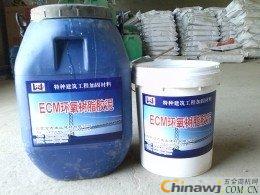To ensure the quality of grouting work, it's essential to strictly control several critical aspects throughout the process. These steps are crucial in achieving a durable and reliable construction outcome.
1. **Measurement**
Accurate measurement is fundamental to the success of any grouting project. The precision level must be maintained at ±1% to avoid errors that could compromise the structural integrity. A dedicated personnel should be responsible for measuring and feeding the materials to ensure consistency and accuracy.
2. **Mixing**
Proper mixing is vital to achieve a uniform blend. Compared to general grouting, this process requires a longer stirring time—typically extended by 30 seconds. If the expansion agent isn't evenly mixed, it may not perform as intended, potentially leading to structural issues. Ensuring a homogeneous mix is key to maximizing the benefits of the material.
3. **Vibration**
Vibration plays a crucial role in eliminating air pockets and ensuring the grout is densely packed. It’s important to maintain a controlled vibration process—neither too little nor too much. The goal is to achieve a compacted state where the grout no longer settles, the surface remains smooth, and no bubbles appear. This step directly affects the final strength and durability of the structure.
4. **Curing**
Curing is an essential phase that significantly influences the performance of the grouting material. Humidity conditions must be carefully managed during this period. Typically, wet curing lasts 14 days, but in some projects, water storage and curing for 7 days are used. Maintaining proper moisture levels ensures optimal hydration and strength development.
5. **Surface Finishing**
The final step, plastering or surface finishing, is critical in preventing plastic cracks. After the initial set, the surface should be pressed with a wooden float at least twice. The last pass should be done just before the final set to prevent early cracking and ensure a smooth, even finish.
**Effectiveness Analysis**
The test specimens prepared met all design requirements in terms of strength. After completion, the wet joints showed no signs of cracking, and adjacent sections were tightly bonded, confirming the effectiveness of the method. Both the construction and design teams recognized the success of the approach.
One of the most important factors in achieving the desired effect of the expansion agent is thorough mixing and adequate curing. Unlike other admixtures, the expansion agent requires precise control over these processes. As a supervisor, I have learned firsthand how critical these steps are in avoiding issues like uneven expansion or cracking due to improper care.
Currently, in highway applications, there is often a lack of attention given to the 14-day limit expansion ratio of the grout containing expansion agents. Many rely on experience rather than following established guidelines, which can lead to improper usage. It’s essential to adhere to regulations and ensure the correct application of these materials.
In the past, frontline technicians and testers were often too busy with on-site tasks to fully understand the grouting mechanism or its application requirements. Mistakes were common, and lessons were learned through trial and error. However, this project has provided valuable hands-on experience, helping to build a solid foundation of knowledge and best practices in grouting techniques.

Taizhou TOPAID Medical Device Co,,ltd , https://www.topaidgen.com